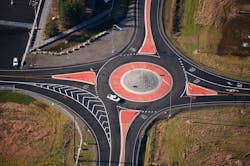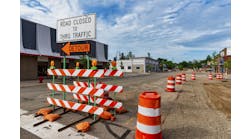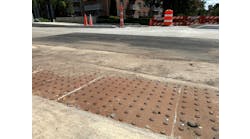Transportation engineers across North America are bringing roundabouts back into their construction toolbox after they gained popularity in other countries around the world. For Beta Group Inc., a multidisciplinary engineering company with offices in Connecticut, Rhode Island and Massachusetts, technology is an integral part of their business. As any engineer will say, building a roundabout is no easy task.
As one of the engineers responsible for two roundabout projects for Beta Group in Connecticut, Jorge Simbaqueba tried the traditional methods of calculating all the geometry needed for a roundabout.
“Back in July 2012, I looked into using the traditional software intersection design tools, where it’s only a two-dimensional geometric layout of the roundabout based on the approaches,” Simbaqueba said. “It was very time-consuming and a lot of trial and error. Using the traditional method, every time I ran an iteration of a roundabout, or changed some of the metrics, it became more complicated.”
His project in Fairfield County, Conn., is very challenging. With a golf course on one side and very tight right-of-way considerations, the four-way intersection created literally hundreds of variables he had to account for.
As it turned out, the solution was just around the corner. A colleague in his office had read about a software package in a trade publication, and Simbaqueba was assigned to conduct some more research and determine whether it could help Beta Group. TORUS takes the innovative approach of generating roundabout geometries using vehicle swept-path movements.
The time-saving features of the software include recalculating all the design elements whenever a change is made to one aspect of the design. Engineers like Simbaqueba never have to start from scratch again. As Simbaqueba explained, “Once we have the radius that we want, we put the roundabout where we want it, we tie it in to the approaches, and the program automatically, dynamically updates every calculation that you need to make sure that it complies with the guidelines. I accomplished all this just by dragging the mouse.”
There is more to roundabout design than making cars go in a circle. Engineers have to determine the capacity requirements, and all roundabout designs must meet these requirements. The software enables users to import traffic data from SIDRA to examine intersection capacity numbers, which allows designers to look at the big picture.
“We are looking to put a single-lane roundabout (in Fairfield County) because of the land constraints, and we’re also getting involved with the traffic volumes that are going through there,” said Simbaqueba. “We’re trying to do the capacity analysis, so we’re taking advantage of the fact that TORUS has the ability to import the SIDRA files. That’s another aspect that’s helpful to us, not just in this project but in all projects.”



